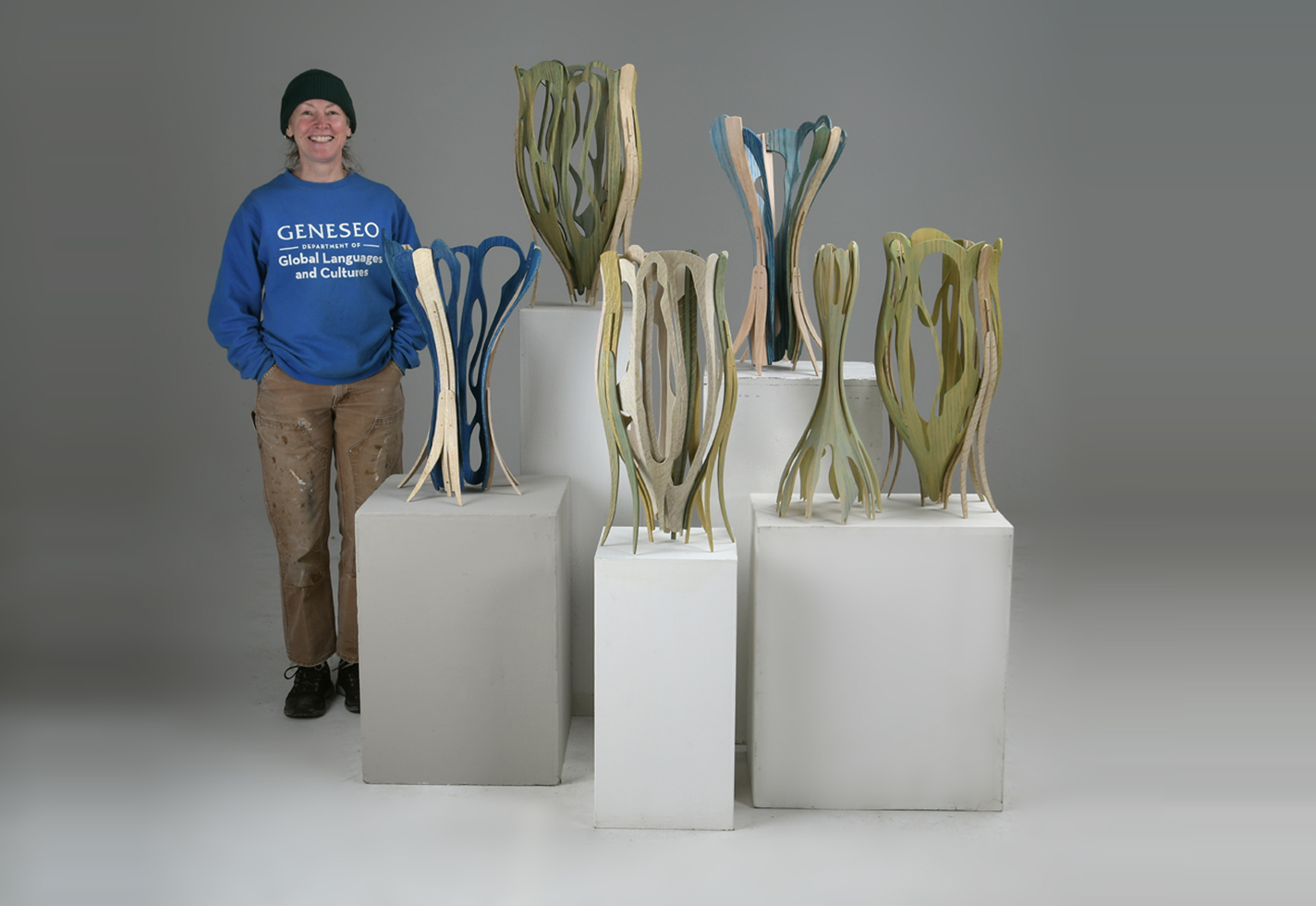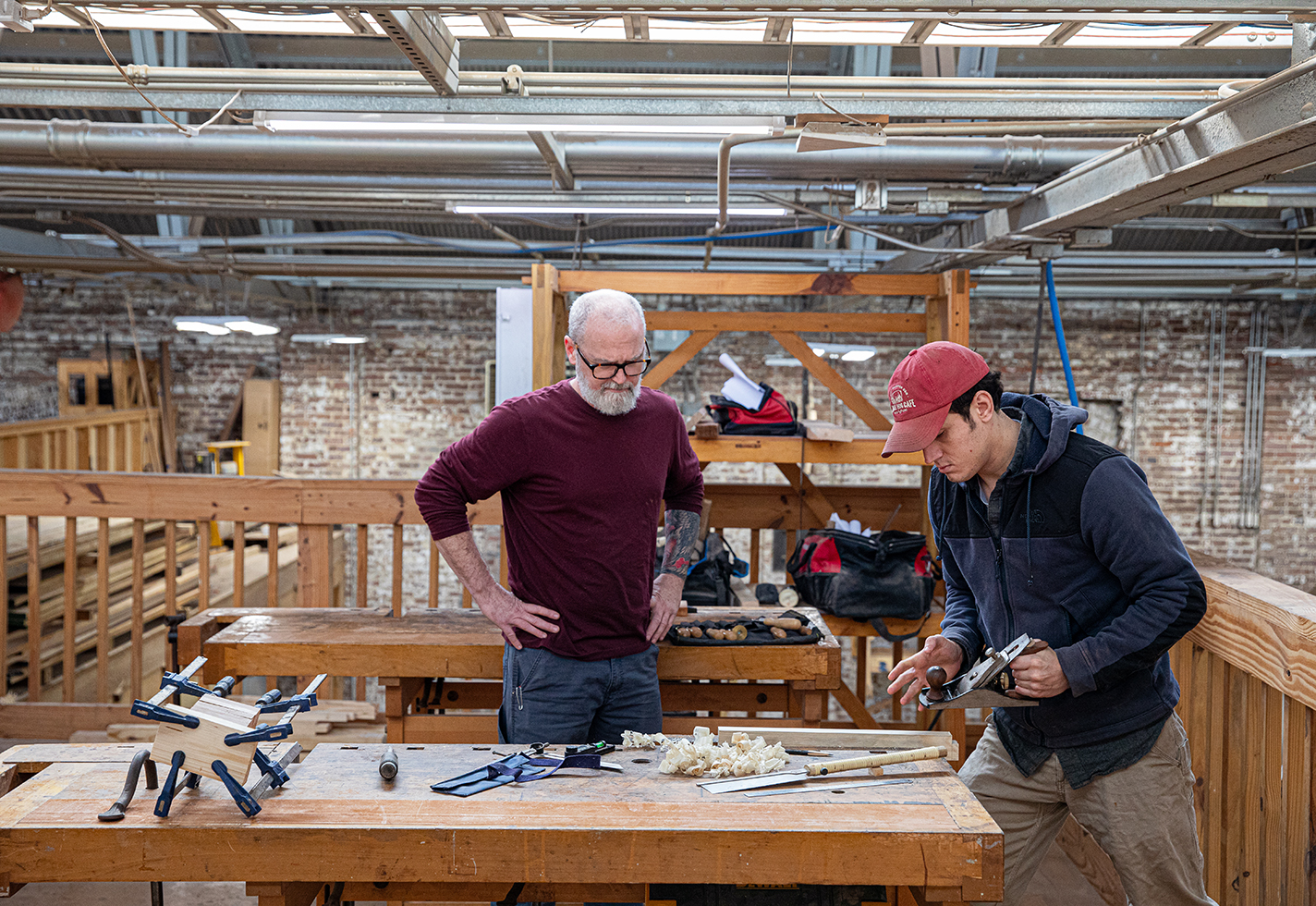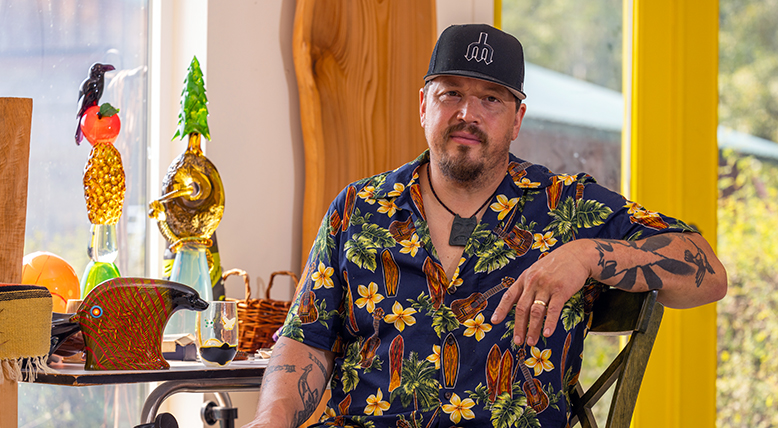Everett Noel lives in the same off-grid cabin in which he was born, by candlelight, on a sprawling plot of land near Grass Valley, California, nestled in the foothills of the Sierras a couple hours from Sacramento. Noel’s father built the cabin in the 1990s; his mother made the bathroom and living room tiles while she was pregnant with him. Today, Noel’s 72-square-foot knife-making workshop is set up in what used to be a chicken coop, before a bear made a banquet of the poultry population.
Not far from a creek, surrounded by a grove of moss-clad canyon live oaks, Noel’s cabin is a cozy, spare refuge. On a rainy November day, a wood-burning stove throws off heat and candles cast a soft glow around the kitchen, illuminating a chef’s knife made by Noel during the second year of the pandemic, and a Damascus kitchen knife of more recent vintage.
Born to a family that fostered creative expression, self-reliance, and a deep connection to nature (his parents and grandfather still live just a five-minute walk away through the woods), the 25-year-old Noel has been making knives since he was 13, forging a singular path from mostly self-taught novice to master of his métier. In his hands, knives are not only perfectly balanced tools for pruning vines and chopping onions, they are also conduits for emotional expression and artistic connection.

Outside his studio, a former chicken coop, Noel examines knives he made over the past 12 years.

















